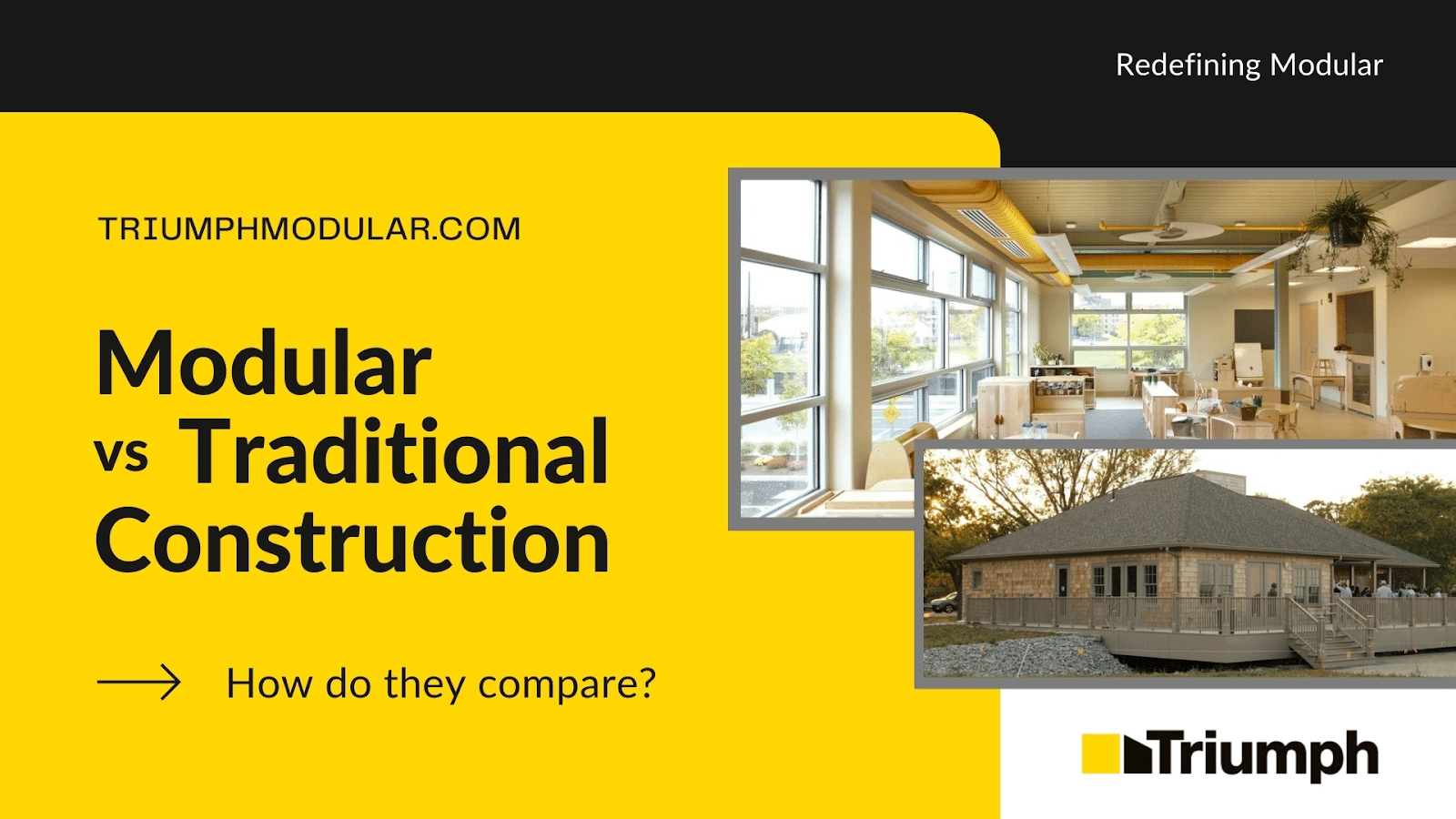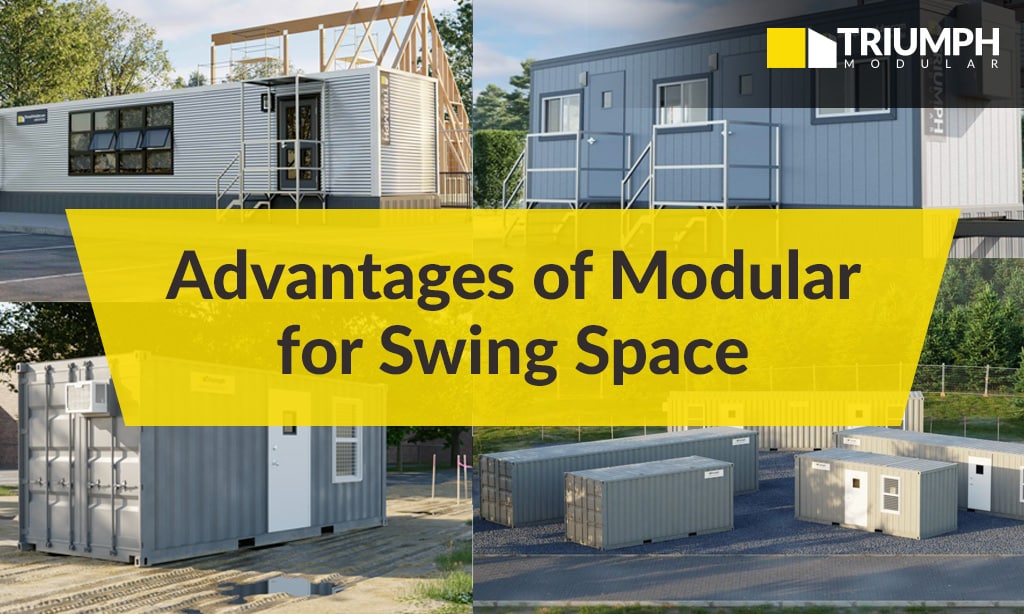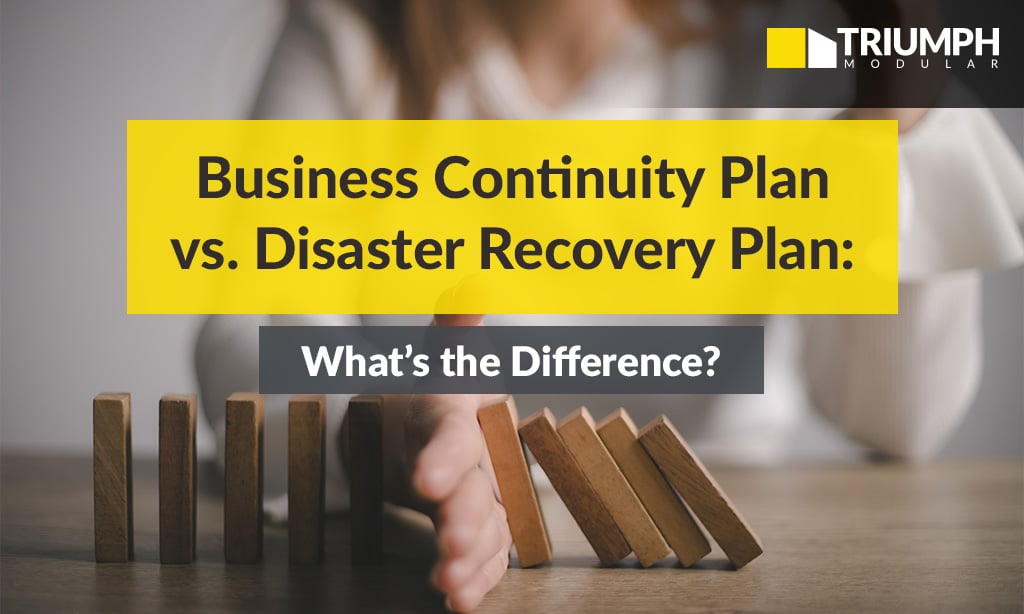Over the years, modular construction has long been wrongly perceived as inferior to traditional on-site construction methods.
While the tables are beginning to turn and modular construction is becoming more and more popular, how do the two methods of construction stack up to each other?
We’ve come up with three different comparisons between modular and traditional construction, all of which are important aspects of the building process.
Time/Speed to Occupancy
There’s no doubting that time is a valuable resource. Especially in the construction industry. New owners want to be able to utilize their new space as soon as possible.
So how do modular and traditional construction compare when it comes to speed to occupancy?
Traditional construction
Traditional construction is mostly linear. This means that steps are typically completed one after the other and not too much can be done simultaneously.
There are also some uncontrollable factors that can drastically affect the total construction time and speed to occupancy. Inclement weather, for example. Should the weather decide not to cooperate for a few days during the project, it could end up delaying the construction time and speed to occupancy.
Modular construction
Modular construction typically offers time savings of up to 50% over traditional construction.
Why is this?
The modular process involves buildings being designed and engineered off-site often while the foundation is being laid at the construction site. This gives owners the opportunity to occupy their building faster and begin operations far sooner than they could if they went the traditional route.
One thing to note here is that maximum speed to occupancy is achieved when design changes are kept to a minimum. Thorough planning should be done to ensure the design is locked in before fabrication begins.
Cost Predictability
Cost predictability is important in the construction industry especially when thinking about modular construction vs traditional construction. Most people like to know how much things are going to cost before they commit, and receiving the bad news that you’ve gone way over budget is never fun.
Traditional construction
Traditional construction costs are often unpredictable. While it’s true that sometimes the stars align and not many changes are made, most of the time there are several different factors that come together to increase the cost.
Sudden change orders and damaged or lost materials are two common examples.
Modular construction
It’s true that design changes are something that could affect the cost of modular construction. However, the building processes are standardized allowing for quality control. Unexpected changes are often avoided.
Also, since modular buildings are constructed in a controlled environment, material loss is far less common. Again, using the weather as an example, modular building materials won’t be damaged by inclement weather inside a factory.
Efficient and Green Construction
As the years go on, sustainability in construction will become increasingly more important. Green building processes are key when it comes to the long-term impact of construction on the earth.
Traditional construction
Sustainability in traditional construction is hard to measure. It will largely depend on the contractors and the materials used. Some may prioritize green building processes. Others may just be looking for the most cost-effective and quick solution possible with no regard for sustainability.
Waste on construction sites, however, is something that’s becoming a problem, with the volume of waste expected to increase by 2.2 billion tons every year by 2025.
Modular construction
The modular process itself has a few sustainability advantages built-in, such as:
- Fewer material deliveries
- Less transportation
- A reduction in waste and pollutants
- Fewer losses and misplacements
As far as green building is concerned, this will again depend on the company you choose to go with. At Triumph, for example, we prioritize a few different green building processes, including:
- An environment with natural lighting and improved air quality
- Environmentally friendly manufacturing using both non-toxic and recycled materials
- Improved water and energy efficiency
Also, during the off-site building process, maximum control of building materials and processes can be maintained in a controlled environment.
Conclusion
Traditional construction will always have its place. However, there are many instances where modular could be more beneficial. The modular construction vs traditional construction question will always come down to your specific needs.
Modular offers a faster speed to occupancy. It offers a higher degree of cost predictability. And modular uses a more sustainable building process. For more information on the advantages of choosing modular, check out our “Why Permanent Modular?” page. Or feel free to contact us with any questions you may have. We’re here to help.




